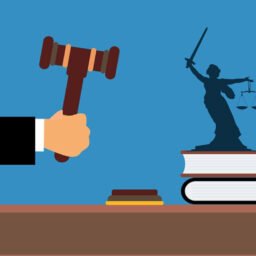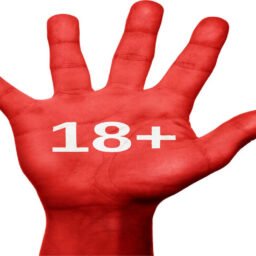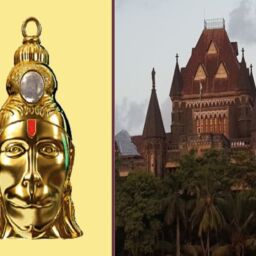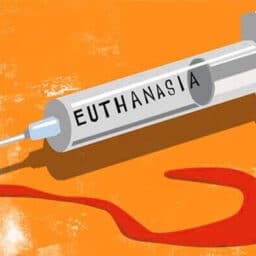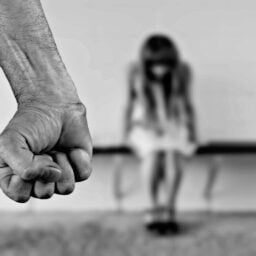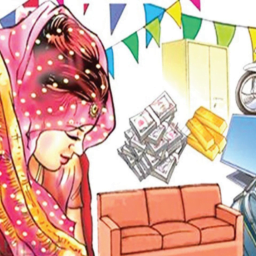INTRODUCTION
India is a land of cultural diversity. It is the homeland to millions of people belonging to different cultures, religions, languages, and traditions who are weaved into a common landmass. But what do we understand by cultural diversity? The word ‘Diversity’ denotes differences instead of inequalities. When we say India is a land of cultural diversity, we try to convey that people belonging to different social groups, institutions live here. People try to identify themselves as belonging to a particular group and culture. It is this identity that creates a feeling of superiority among people who then try to exclude outer groups. When these diverse communities belong to a large nation as an entity, difficulties may arise in terms of competition or conflict.
These problems are not new ones. Our constitution makers were aware of the problem that is a diverse country, various opinions will be reflected. To curb this problem, they chose the model of a secular state. But the question is whether the approach of secularism was successful in curbing the problem of secularism? Is our country favouring a majoritarian view keeping aside the need of the minority? Is the Saffron wave trying to spread the Hindutva culture and diminishing the nature of provisions laid down by our very constitution? Is it right to say that India is shifting its nature from a state-nation to a nation-state predominated by one culture? This blog through the case study of the Babri masjid issue and Ayodhya verdict tries to understand the problem of communalism, communal violence and answers the above question in the critical analysis of the Ayodhya verdict.
WHAT IS COMMUNALISM?
According to Bipin Chandra, communalism is “the belief that because a group of people following a particular religion, they have common social, political and economic interests”. In simpler words, he meant that if a communal group tends to work for his interest, it will be a loss for other communal groups.
CASE STUDY OF THE BABRI MASJID ISSUE
The makers of the constitution were aware of the problem of communalism therefore they adopted a secular approach to avoid this problem. This situation had been avoided for the past 45 years. However, the demolition of Babri Masjid eroded the Indian image of secularism and giving rise to Hindu revivalist forces.
RELIGIOUS BACKGROUND OF THE BABRI MASJID
Ram Janmabhoomi, the name given to the site that is believed to be the birthplace of Rama which is Ayodhya. Hindus consider that the exact birthplace of Ram once stood where Babri Masjid is built. They propounded that Mughals destroyed the Hindu shrine present in that place. However, Critics say that such claims arise in the 18th century and hence have no evidence to prove their basis. Babri Masjid was built by one of the generals of Babur, Mir Baqi, on his order in 1528. Francis Buchanan, East India Company’s surveyor stated that the Masjid was built by Mir Baqi and the inscription on the mosque attested to the fact. [1]
“In December 1949, a body called the Akhil Bharatiya Ramayana Mahasabha (ABRM) conducted a nine-day recitation of the Hindu epic, Ramacharitamanas. At the end of the recitation, an idol of infant Rama, Rama Lalla was said to have ‘appeared miraculously’ at the disputed site on the night of December 22, 1949. There were counterclaims from the Muslims that it was ‘planted’ by the Hindu lobby.”[2]
On 23rd November, the event coordinators announced the appearance of idols and asked Hindu to visit the mosque for darshan of icons. K.K. Nayar, district magistrate of Faizabad was asked to remove the idols by his senior, however, he refused citing that it would lead to communal riots. KK Nayar was accused of being in cahoots with Hindu revivalist forces.
“Gopal Singh Visharad filed a suit in the Faizabad Court, asking that Hindus be allowed to place Rama and Sita at the place on 16th January 1950. In 1959, the Nirmohi Akhara filed a claim for ownership of the mosque. On 18 December 1961, the Sunni Central Waqf Board made another claim requesting ownership of the site and removal of the icons from the mosque.”[3]
DEMOLITION OF THE MOSQUE
In the 1980s, the Vishwa Hindu Parishad (VHP) started its campaigning for building sanctuary at the place of the mosque with BJP as its political mouthpiece. In September 1990, L. K. Advani started a Rath Yatra to support RSS and VHP propaganda of building Ram temple. However, he was arrested in Bihar before he could reach Ayodhya. Regardless of this, a horde of Kar Sevaks or Sangh Parivar activists made an unsuccessful attempt to demolish the mosque.
On 6 December 1992, a group of Hindu Kar Sevaks (activists) ruined the sixteenth-century Babri Mosque. Around 2000 people were killed in those riots which included cities such as Bhopal, Mumbai, Delhi, Hyderabad. On 16 December 1992, to probe the circumstances responsible for the demolition of the Mosque, the government set up the Liberhan Commission. It took 17 years for Liberhan Commission to present its answer.
AYODHYA’S VERDICT
In 1992, when Babri Masjid was demolished, Allahabad HC began the hearing to determine the ownership of disputed land in Ayodhya. The HC ordered ASI to excavate the site. In 2003, ASI found evidence of a temple under the mosque which was refuted by Muslims[4]. In Sept 2010, Allahabad HC gave an order to trifurcate 2.77 acres among Ram Lalla Virajman, Sunni Waqf Board, and Nirmohi Akhara. In 2011, SC suspended the HC judgment. In 2017, SC gave a decision for out-of-court settlement.
“On March 8, 2019, the SC referred the Ayodhya land dispute case for mediation, asked the panel to complete proceedings within 8 weeks. However, the Mediation panel failed to reach a consensus.” “On October 16, the SC concluded a hearing in the case and declared that the verdict will be delivered by CJI Gogoi on November 9 before his retirement on November 17. … In a unanimous verdict, the Supreme Court Bench led by Chief Justice Ranjan Gogoi ordered that the disputed land of 2.77 acres in Ayodhya should be given to Hindus for construction.”[5]
According to Article 142, SC may pass such order or decree to ensure that a wrong committed is remedied. SC invoked art 142 to provide 5 acres of land outside the disputed structure to Sunni Waqf Board. SC gave judgment that trust needed to be formed within 3 months that will be responsible for construction and Nirmohi Akhara will be a member.
CRITICAL ANALYSIS OF AYODHYA VERDICT
It is important for readers to understand and analyse various questions that this project raised in the introduction. The question that was raised was ‘Is our country favouring majoritarian view keeping asides the need of minority?’ In terms of the Ayodhya verdict, many critics argued that the SC decision was based on faith rather than upholding the law. But I would like to refute this view. SC decision was based on ASI findings which reported a ‘pre-existing underlying structure dating back to the 12th century, a structure which the ASI said was of ‘Hindu origin’. The findings took into account the travelogues of William Herbert (1611), Thomas Herbert (1634), Joseph Tiefenthaler (1776-1771) who have stated that there existed a Ramkot fortress. Had there been a majoritarian view, the court wouldn’t have given 5 acres of land to the Sunni Waqf board. The SC invoked Art 142 recognizing the fact that the demolition of Babri Masjid was an egregious act and a wrong done to the Muslim community. The SC decision was not meant to hurt the sentiments of any particular community. Now the question is why SC rejected the claims of Muslims on disputed land based on adverse possession? the SC rejected the claim and concurred with the Allahabad High Court’s 2010 ruling, which stated that there was no adverse possession as it was an open space where “anybody could have built anything” for prayers. The second question was ‘Is the Saffron wave trying to spread the Hindutva culture and diminishing the nature of provisions laid down by our very constitution?’
In terms of the Ayodhya verdict itself, the secular nature has not been eroded. The decision given by the SC was supported by both Hindus and Muslims. The decision given by SC was rational. Had it been not rational, the Muslim community would have done riots for hurting their sentiments. The decision of SC itself has upheld the dignity of our constitution. Talking about the country as a whole and whether BJP is supporting a Hindu Majoritarian or not needs an analytical perspective and involves the internal gimmicks of the parties.
CONCLUSION
This blog is intended to give the readers insights into the concept of communalism, communal politics, and communal violence. The case study of Babri masjid and its verdict was cited to analyze and answer various questions that had created a black spot on India’s character of secularism. The critical analysis of the Ayodhya verdict refutes the critics and acknowledges the fact that the decision of SC was rational and was done in terms of Archaeological Survey of India ( ASI) findings which don’t include the author’s biases.
Communalism itself is a political challenge to India which has been there since the colonial period. It is not easy to remove the religious symbol and develop a neutral identity among people with regard to the communities. This requires the government of India to take a positive alternative to communalism. Defining a positive alternative can be done by basically upholding the basic norms of democracy, secularism, and religious identity. Ironically, these terms have themselves become nebulous. People believe democracy to be a majoritarian view and hence suppress minorities. All these gaps need to be filled by a proper approach that does not separate or creates a feeling of oneself against the world.
Author(s) Name: Nandini Yadav (Rajiv Gandhi National University of Law, Patiala)
References:
[1] Civils Daily Staff, ‘The Ram Janmabhoomi Verdict’( Civils Daily, 19 November 2019) <https://www.civilsdaily.com/burning-issue-the-ram-janmabhoomi-verdict/ > accessed 14 September 2021
[2] Mahesh A. Kalra, ‘Revisiting the Ayodhya dispute: History and the aftermath’ (DNA, 19 April 2017)<https://www.dnaindia.com/india/report-revisiting-the-ayodhya-dispute-history-and-the-aftermath-2266242 > accessed 14 September 2021
[3] The Editor of Business Standard, ‘The Ayodhya case timeline: Events leading up to the historic judgment’ (Business Standard, 8 January 2020) <https://www.business-standard.com/article/current-affairs/the-ayodhya-case-timeline-events-leading-up-to-the-historic-judgment-119111000010_1.html> accessed 15 September 2021)
[4] Ibid
[5] Ibid


